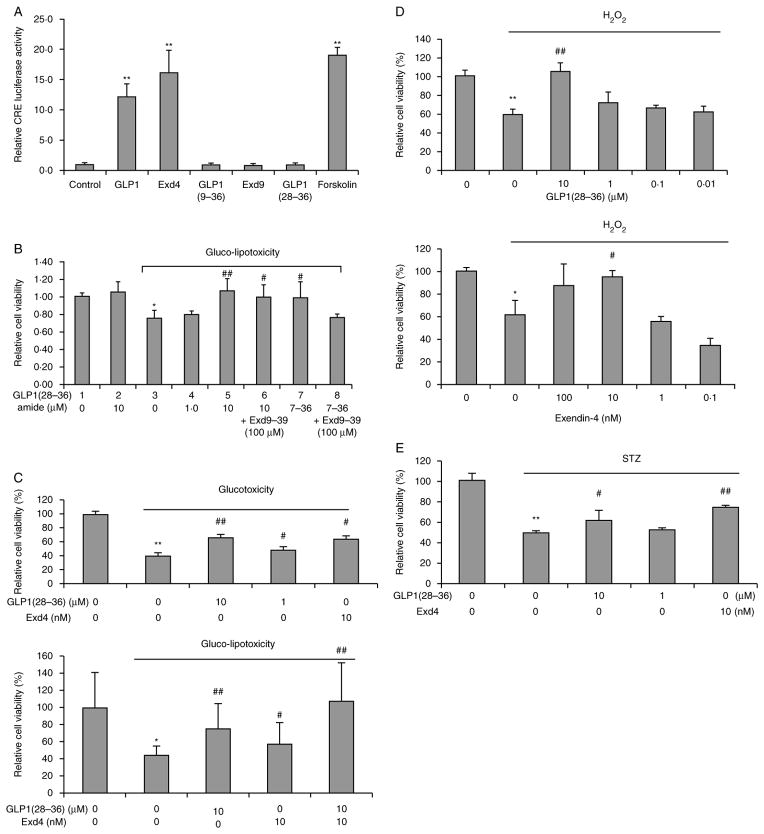Figure 3.
GLP1(28–36) protects INS-1 cells against glucotoxicity, glucolipotoxicity, H2O2-induced oxidative stress, and STZ-induced cell damage independent of the GLP1R. (A) GLP1 receptor activation assay. A multimerized cAMP response element promoter driving a luciferase transcriptional reporter was used to test GLP1 receptor activation by GLP1 peptides. Forskolin is a control activator of adenylate cyclase. (B) ATPlite cell viability assay: INS-1 cells were cultured in glucolipotoxicity media (30 mM glucose +200 μM oleic acid). Different doses of GLP1(28–26)amide with and without addition of the GLP1 receptor antagonist, exendin(9–39) (Exd9–39), or control vehicle were concomitantly added and replenished at day 2. Cell viability was measured by ATPlite assay at day 4. The known GLP1 receptor agonist, GLP1(7–36)amide (7–36), serves as a control and is antagonized by the co-addition of Exd9–39. (C) Effects of GLP1(28–36)amide and exendin-4 on glucotoxic and glucolipotoxic cells. (D) Cytoprotective effects of GLP1(28–36)amide and exendin-4 on H2O2-induced oxidative stress. (E) GLP1(28–36)amide and the enzyme-resistant GLP1 receptor agonist exendin-4 both protect against STZ-induced (0.5 mM) cell stress. *P<0.05, **P<0.01 cell stressor vs control. #P<0.05, ##P<0.01 stressor control vs stressor plus GLP1(28–36)amide (n=6–12).

